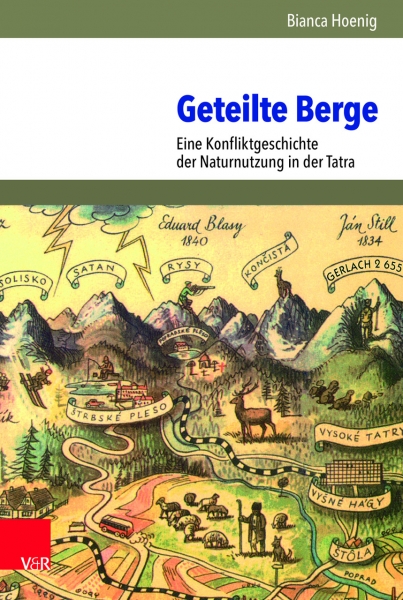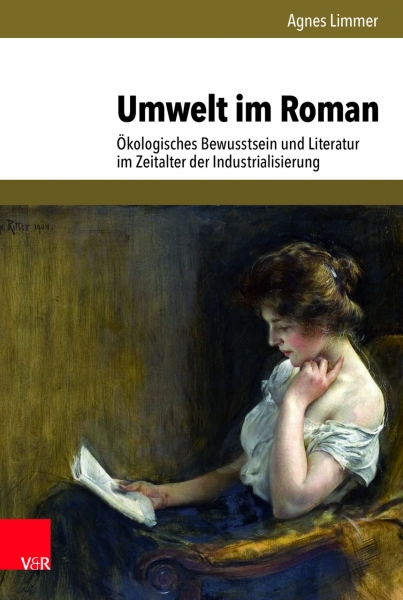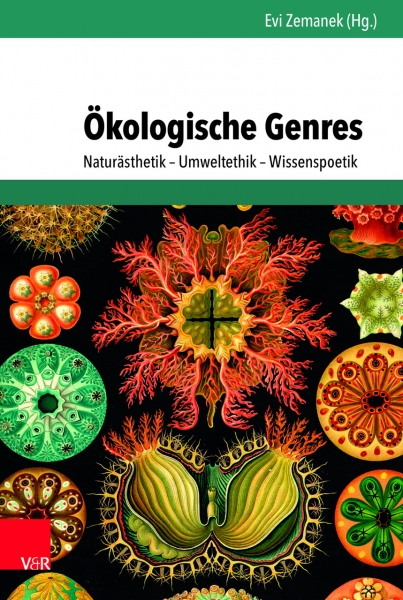Umwelt und Gesellschaft
Umwelt und Gesellschaft seeks to become the prime German-language outlet for high-quality monographs and edited volumes of environmental research within the humanities, with a special emphasis on environmental history. It is interdisciplinary and open in thematic and methodological respects, and open to all scholars who publish in German. The series is published by Vandenhoeck & Ruprecht, and is edited by Christof Mauch and Helmuth Trischler.
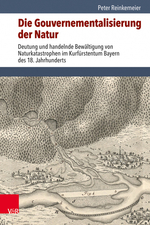
Volume 27: Peter Reinkemeier, Die Gouvernementalisierung der Natur: Deutung und handelnde Bewältigung von Naturkatastrophen im Kurfürstentum Bayern des 18. Jahrhunderts
During the Age of Enlightenment not only governance, knowledge, and communication changed. Our way of understanding and dealing with nature, especially with natural hazards, was also in a state of transition, which resulted in a form of modern natural hazard management that still influences our handling of threatening and occurring natural disasters today. Using the example of the Electorate of Bavaria in the 18th century, this book outlines this development on the basis of the natural disaster types storm and flood. In examining interpretations of contemporary natural disasters and practices of dealing with them, it exposes a discourse on natural disasters dominated by actors from governance and academia and their attitude towards these catastrophes. Peter Reinkemeier outlines the chronological development towards the modern-day technological natural hazard management and thus contributes to a historical critical questioning of how we deal with nature and natural hazards.
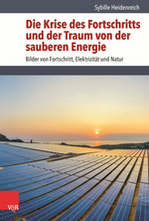
Volume 26: Sybille Heidenreich, Die Krise des Fortschritts und der Traum von der sauberen Energie
The dream of clean energy has yet to be realized. For the transition into the post-fossil age, however, not only technical innovations, but also far-reaching transformation processes are required. The book rolls up the sustainability discourses of the present from a cultural-historical point of view. The hopes that have been directed towards electricity as an energy close to nature since the 19th century are conflated in the image of the »fairy of electricity«. This contrasts with the imagery of the “Promethean age”, which formulates the consequences of a concept of progress that has fallen into crisis. Sybille Heidenreich shows that in the narrative of the light bearers, from the Aurora in Ph. O. Runge's »Morgen« to the light fairies in poster art and the android of the present, ideas of new relationships with nature as well as an ethical embedding of technologies and economy unfold.
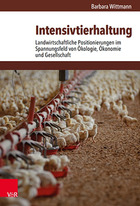 Volume 25: Barbara Wittmann, Intensivtierhaltung: Landwirtschaftliche Positionierungen im Spannungsfeld von Ökologie, Ökonomie und Gesellschaft
Volume 25: Barbara Wittmann, Intensivtierhaltung: Landwirtschaftliche Positionierungen im Spannungsfeld von Ökologie, Ökonomie und Gesellschaft
Intensive animal husbandry and food production have gained public attention in Western industrialized nations in recent years in relation to ecological, climate, and animal ethics. Barbara Wittmann's study focuses on farmers themselves and analyzes and contextualizes their positioning in relation to social, economic, ecological, and animal ethics issues. She shows that our normative image of conventional production must be rethought to reflect the complexity of the farming industry and the actors involved.
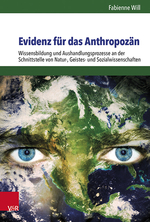 Volume 24: Fabienne Will, Evidenz für das Anthropozän: Wissensbildung und Aushandlungsprozesse an der Schnittstelle von Natur-, Geistes- und Sozialwissenschaften
Volume 24: Fabienne Will, Evidenz für das Anthropozän: Wissensbildung und Aushandlungsprozesse an der Schnittstelle von Natur-, Geistes- und Sozialwissenschaften
When atmospheric chemist Paul Crutzen and limnologist Eugene F. Stoermer introduced the term Anthropocene in 2000, they ignited a scientific debate that quickly gained momentum and is now being negotiated across a wide range of disciplines. Established boundaries between traditional disciplinary cultures of knowledge production are blurring, which forces the actors involved to step out of their arenas and to negotiate with the other groups of actors about securing evidence. The respective evidence practices come under legitimization pressure and are renegotiated in the inter- and transdisciplinary space. Fabienne Will illuminates the Anthropocene debate as a trading zone, in which not only central questions about the present and future of humanity on earth, but also fundamental understandings of the production and safeguarding of evidence are negotiated.
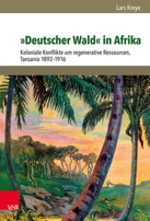 Volume 23: Lars Kreye, »Deutscher Wald« in Afrika: Koloniale Konflikte um regenerative Ressourcen, Tansania 1892–1916
Volume 23: Lars Kreye, »Deutscher Wald« in Afrika: Koloniale Konflikte um regenerative Ressourcen, Tansania 1892–1916
The introduction of modern forestry in Tanzania during the German colonial period was accompanied by massive encroachments on the land use rights of local inhabitants. This led to unintended ecological and social conflicts, leading to disease and uprisings, which German colonial powers only partially managed to control, with economic success mostly failing to materialize. The struggle for tropical forest resources has shaped Tanzanian history up to the current day. Lars Kreye analyzes discourses and practices in the field of colonial forest conflicts and illuminates their significance to tropical forest protection and global climate change.
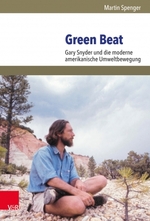
Volume 22: Martin Spenger, Green Beat: Gary Snyder und die moderne amerikanische Umweltbewegung
Gary Snyder (born in 1930) is one of the most important poets of the twentieth century. The Pulitzer Prize winner's work includes poems, prose, academic essays, and more. Snyder has been the subject of much academic discussion over the past five decades, and his writing and environmental activism have been recognized by both politicians and the broader public. As a central figure of American subculture, he influenced the Beat generation and the counterculture movement. He is also associated with the more recent back-to-land movement, or eco-villages.
Volume 21: Melanie Arndt, Tschernobylkinder: Die transnationale Geschichte einer nuklearen Katastrophe
Following the Chernobyl disaster, more than a million children and adolescents were sent on recreational trips in the accompaniment of thousands of adults to recover from radiation exposure and the strains of everyday life in collapsing post-Soviet society. A dense transnational network of NGOs and individuals was formed around these “Chernobyl children,” taking over roles the state could no longer provide. The worldwide commitment that began with the opening of the Soviet Union helped to make this nuclear accident, which was initially considered "typically Soviet" in large parts of the world, visible and tangible as a transnational catastrophe by bringing the reality of the disaster into the everyday lives of hundreds of thousands of people in Europe and North America.
Volume 20: Bianca Hoenig, Geteilte Berge: Eine Konfliktgeschichte der Naturnutzung in der Tatra
The Tatra is the highest mountain range of the Carpathians and forms the natural border between Poland and Slovakia. Around the mid-nineteenth century, the Tatra became an iconic landscape for both the Slovak and Polish national movements and maintains great cultural significance in both countries today. Hoenigs describes how local disputes over the everyday use of mountain land have repeatedly gained social relevance, with conflicts between conservationists, tourists, and alpine farmers reaching far beyond the region. The dispute over common access rights in the Tatras has led not only to military aggression, but also to international cross-border cooperation to protect the mountain.
Volume 19: Agnes Limmer-Kneitz, Umwelt in Roman: Ökologisches Bewusstsein und Literatur im Zeitalter der Industrialisierung
Umwelt in Roman (Environment Through the Novel) provides insights into social perceptions of environmental risks and their impact during early industrialization. Agnes Limmer-Kneitz searches for the roots of modern ecological consciousness in the cultural legacy of the long nineteenth century. She draws on prominent novels from Europe and the United States, providing an ecocritical rereading of Charles Dickens, Wilhelm Raabe, and Upton Sinclair, among others, making a valuable contribution to the field.
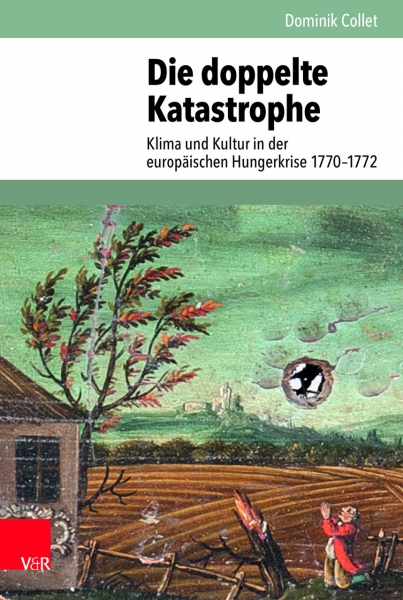
Volume 18: Dominik Collet, Die doppelte Katastrophe: Klima und Kultur in der europäischen Hungerkrise 1770–1772
At the end of the eighteenth century, during the Little Ice Age, Europe experienced one of the worst hunger crises in its history in the wake of a severe climate anomaly. The fatal interaction of climate and culture made it a "double" catastrophe. Its effects hit the entire continent and cost hundreds of thousands of lives. In addition to segregation, migration, and anti-Semitism, the crisis also spurred political reforms, humanitarianism, and new sciences. Using this event as an example, Collet’s book shows how former societies coped with weather extremes and highlights the social dimensions of diverse climate impacts.

Volume 17: Uwe Spiekermann, Künstliche Kost: Ernährung in Deutschland, 1840 bis Heute
Our understanding of nutrition changed fundamentally during the mid-nineteenth century: meals and ingredients became a combination of compounds. As people began planning their diets and improving nutrition, it paved the way for new products that were not marked by origin. Such foods broadened our pallets and allowed security of supply, but also created new risks and devalued the culinary arts. The long shadow of this new knowledge still determines our food and food culture. Profiling key actors and events, the author examines how diets, advertising, and additives have developed since the mid-nineteenth century, and how responses continue to shape everyday life.
Volume 16: Evi Zemanek, Ökologische Genres: Naturästhetik – Umweltethik – Wissenspoetik
The international field of ecocritism is flourishing, yet there is little work exploring the affinities of literary genres for ecological knowledges and structures. The book presents a wide range of genres from different epochs, literatures, and cultures, and analyzes the characteristic interplay of natural aesthetics, environmental ethics, and knowledge poetics. The author interrogates the generic dispositions and functions of certain genres in response to ecological relationships and transformations, drawing on perspectives from fields such as biology and applied ecology.
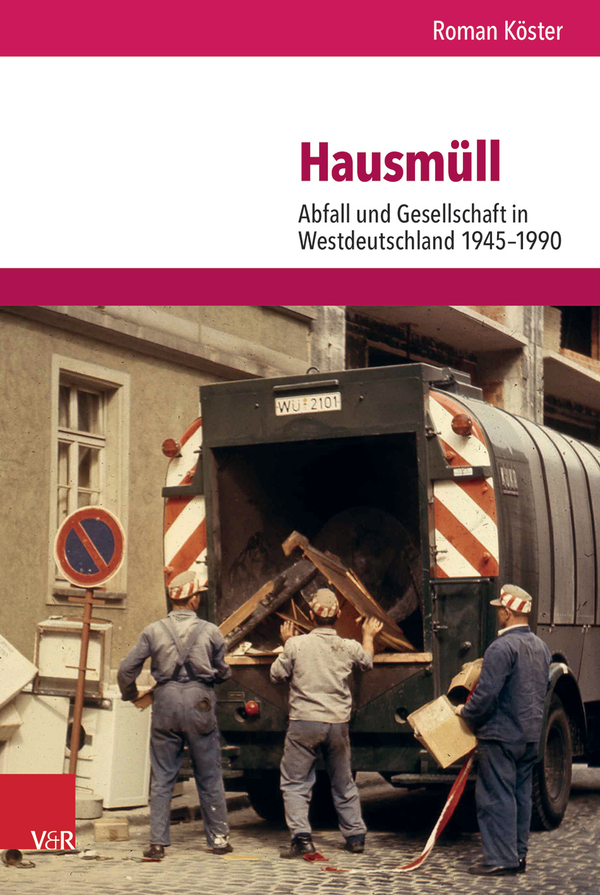
Volume 15: Roman Köster, Hausmüll: Abfall und Gesellschaft in Westdeutschland 1945–1990
In the wake of the “economic miracle,” post-war West German society was confronted with a new challenge: the increase in consumption resulted in a dramatic increase in the amount of waste being produced. By the 1960s municipal waste management systems were stretched to their limits. An even bigger problem was how to prevent this waste from causing harm to humans and the environment. In this study of social attitudes towards waste, Roman Köster traces the development of a “new” environmental problem and the political, economic, and discursive strategies for dealing with it.
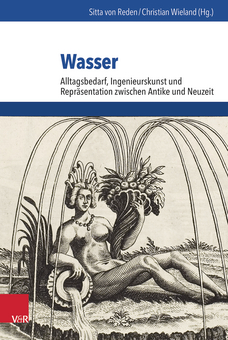 Volume 14: Sitta von Reden, Christian Wieland (ed.), Wasser: Alltagsbedarf, Ingenieurskunst und Repräsentation zwischen Antike und Neuzeit
Volume 14: Sitta von Reden, Christian Wieland (ed.), Wasser: Alltagsbedarf, Ingenieurskunst und Repräsentation zwischen Antike und Neuzeit
This volume offers a comparative perspective on the control of water and water supply as political means of stabilizing, legitimizing and representing power. Water is a scarce and at the same time un-substitutable means of life whose successful control can help to demonstrate the success of political régimes. Ancient, Early Modern and modern states did and still do use this opportunity to stabilize their power, while aesthetically appealing or materially impressive hydraulic works of engineering visually encapsulate that power. But their building also mobilizes and concentrates manpower, taxes and know-how so that successful water control and state-building were interrelated processes.
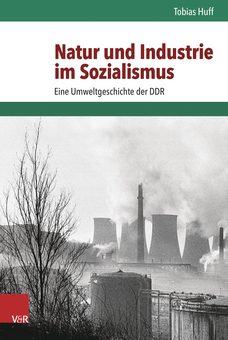 Volume 13: Tobias Huff, Natur und Industrie im Sozialismus: Eine Umweltgeschichte der DDR
Volume 13: Tobias Huff, Natur und Industrie im Sozialismus: Eine Umweltgeschichte der DDR
Should East Germany be considered a "failed state" from an ecological perspective? Images of polluted cities, landscapes devastated by mining, and sludge pits have become icons representing the environmental destruction of the former East German state. Tobias Huff offers a more nuanced picture, pointing out growing ecological awareness and efforts to protect the forest and clean the air. His study challenges common conceptions that portray the environmental history of East Germanyas one of decline, as well as the idea the state and environmentalism were in direct opposition to one another. Instead, he shows that there were advocates of environmental measures within the socialist party, even while the party determined which voices and issues were heard and discussed.
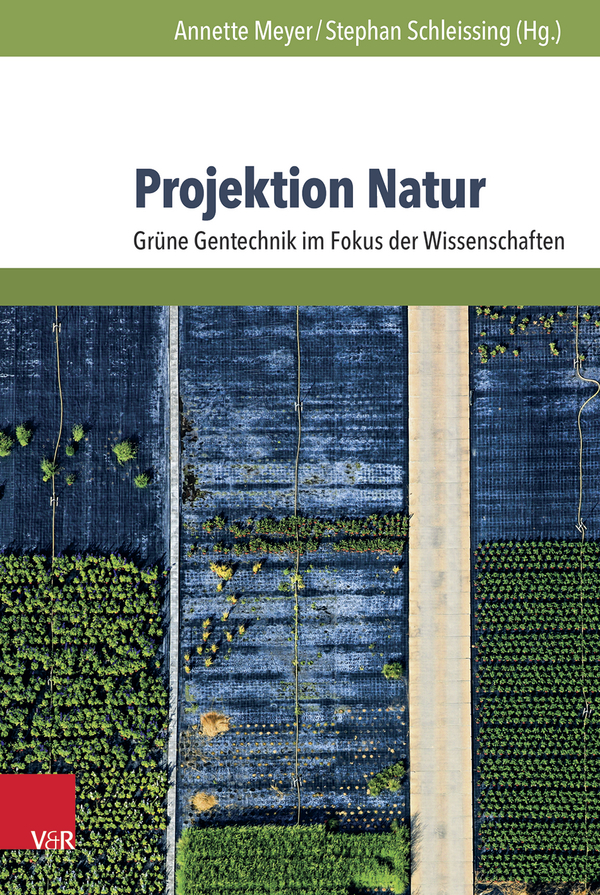 Volume 12: Annette Meyer, Stephan Schleissing (ed.), Projektion Natur: Grüne Gentechnik im Fokus der Wissenschaften
Volume 12: Annette Meyer, Stephan Schleissing (ed.), Projektion Natur: Grüne Gentechnik im Fokus der Wissenschaften
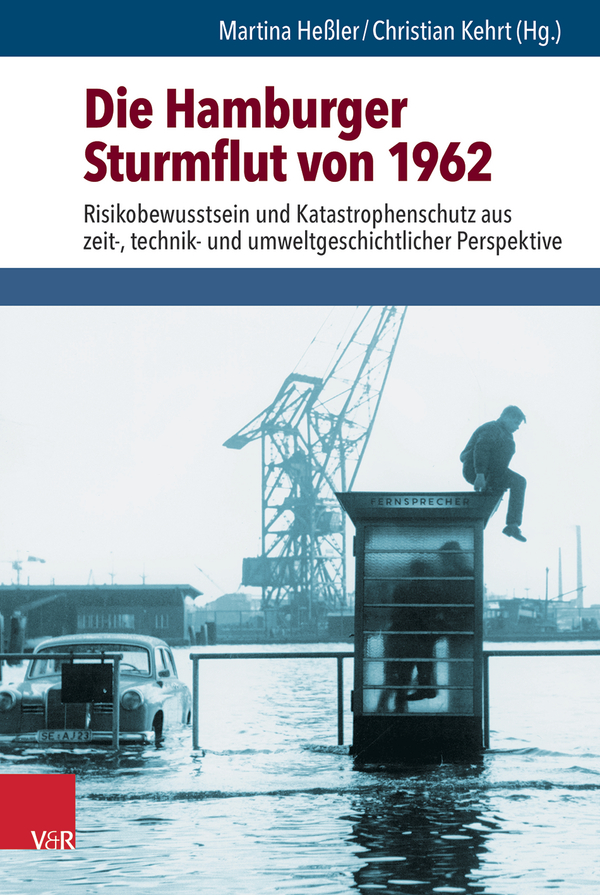 Volume 11: Martina Heßler, Christian Kehrt (ed.), Die Hamburger Sturmflut von 1962: Risikobewusstsein und Katastrophenschutz aus zeit-, technik- und umweltgeschichtlicher Perspektive
Volume 11: Martina Heßler, Christian Kehrt (ed.), Die Hamburger Sturmflut von 1962: Risikobewusstsein und Katastrophenschutz aus zeit-, technik- und umweltgeschichtlicher Perspektive
In February 1962 Hamburg was devastated by a major storm flood: 315 were killed, 20,000 evacuated, and the dykes were damaged in more than 60 places. The catastrophe shocked not just Hamburg, but the entire German nation. Although the flood was a key event in the history of the German Federal Republic, it has seldom been the topic of in-depth historical study. The articles in this volume offer comparisons with other floods in the eighteenth and nineteenth centuries, as well as examining the relationship between humans and nature. Risk awareness and disaster protection in modern societies are recurring topics. The volume also considers the role of technology and the socio-cultural context, for example the roll of the German armed forces and the debates of the time about catastrophe protection.
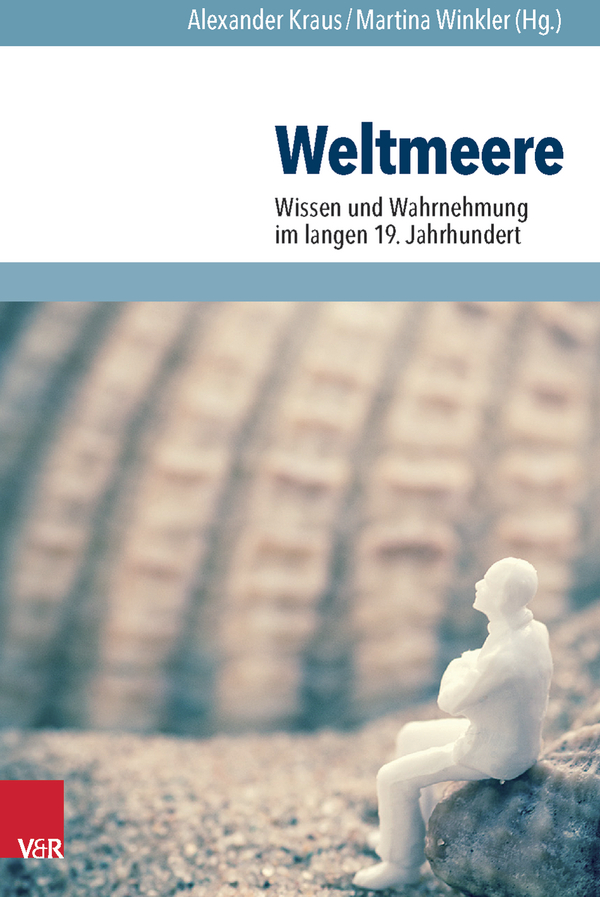 Volume 10: Alexander Kraus, Martina Winkler (ed.), Weltmeere: Wissen und Wahrnehmung im langen 19. Jahrhundert
Volume 10: Alexander Kraus, Martina Winkler (ed.), Weltmeere: Wissen und Wahrnehmung im langen 19. Jahrhundert
The contributors to this volume examine our relationship with the oceans in the long nineteenth century: how it became the object of scientific study, how it was domesticated, aestheticized, commodified, and structured. They reveal processes which call into question the belief that the ocean was seen as "foreign" and "other" in the modern period. This volume calls for a demystification and pluralization of the cultural study of the seas and gathers both systematic and empirical arguments for such a shift. The articles consider such different subjects as the development of aquariums, Japanese whale fishing, the perception of sound on polar expeditions, and the psychological concepts and literary portrayals of the sea and marine studies in the German and Russian Empires.
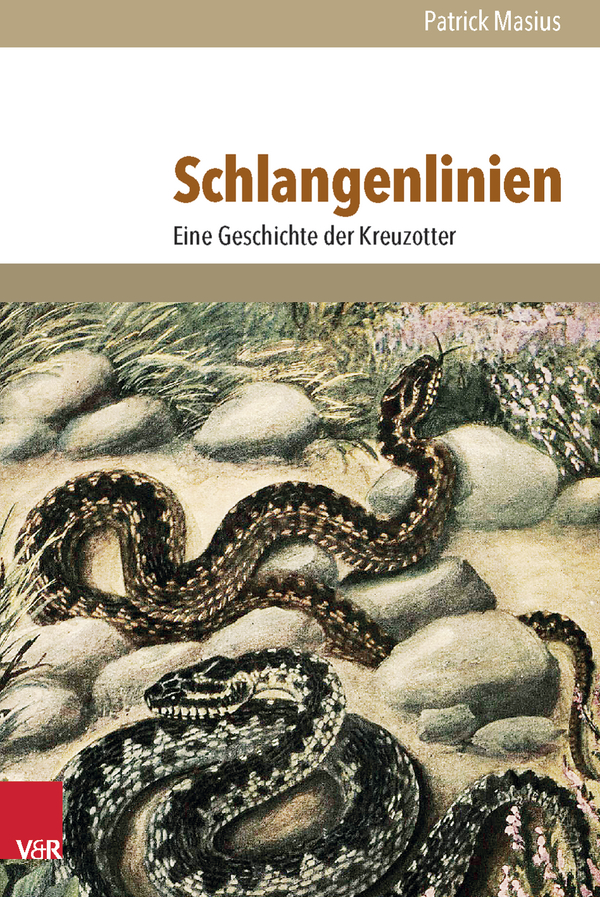 Volume 9: Patrick Masius, Schlangenlinien: Eine Geschichte der Kreuzotter
Volume 9: Patrick Masius, Schlangenlinien: Eine Geschichte der Kreuzotter
At the beginning of the nineteenth century the European viper had seldom been studied. But knowledge about this poisonous snake, which represented a danger for both humans and animals, would soon spread. Scientific study went hand-in-hand with ideas about how to exterminate it. The policy of extermination reached its height in 1900 when the Prussian government offered a reward for every snake killed. But the European viper turned out to be very good at surviving and government measures were unsuccessful. In the twentieth century the attitude towards the European viper changed substantially. In the wake of aesthetic and ecological nature conservation ideals it was gradually rehabilitated, eventually even receiving official protected status.
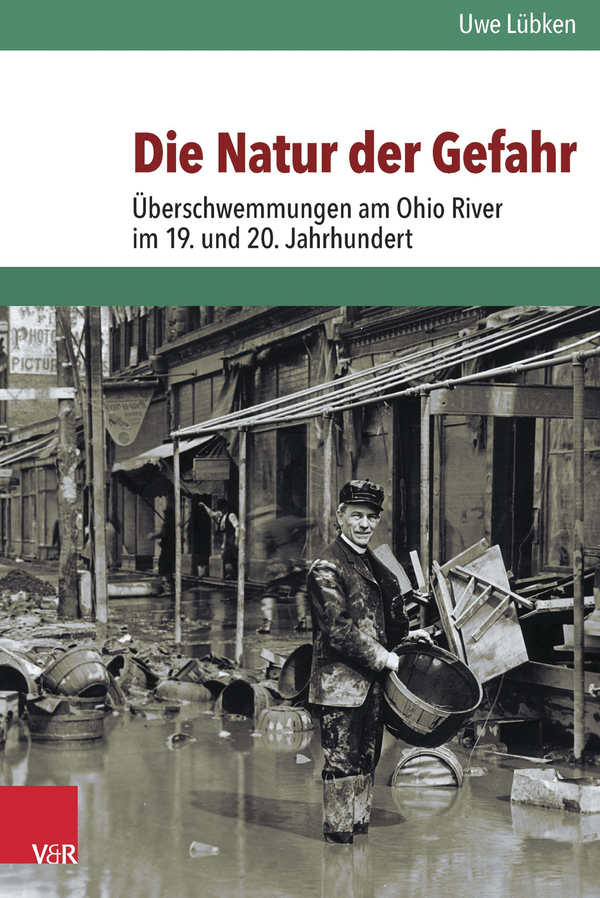 Volume 8: Uwe Lübken, Die Natur der Gefahr: Überschwemmungen am Ohio River im 19. und 20. Jahrhundert
Volume 8: Uwe Lübken, Die Natur der Gefahr: Überschwemmungen am Ohio River im 19. und 20. JahrhundertScarcely any other river in the United States has been the scene of such dramatic interaction between nature and society as the Ohio River. The river, an important channel for communication and transportation, was crucial for the rapid development of the Ohio Valley in the nineteenth century. Trade centers and industrial metropolises such as Pittsburgh, Louisville, and Cincinnati sprang up along its banks. However, frequent floods challenged this apparently harmonious relationship between nature and society. Lübken traces the history of the flood regions from the late eighteenth century through the twentieth century. He shows how the vulnerability and resiliance of the local communities has changed over the course of generations, and how specific flood disasters have been dealt with socially, economically, and culturally.
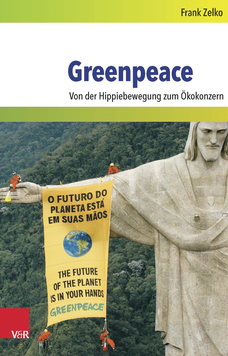 Volume 7: Frank Zelko, Greenpeace: Von der Hippiebewegung zum Ökokonzern
Volume 7: Frank Zelko, Greenpeace: Von der Hippiebewegung zum Ökokonzern
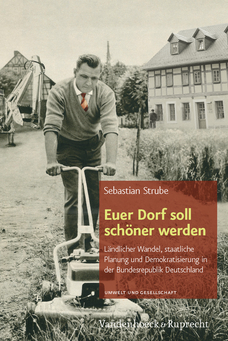 Volume 6: Sebastian Strube, Euer Dorf soll schöner werden: Ländlicher Wandel, staatliche Planung und Demokratisierung in der Bundesrepublik Deutschland
Volume 6: Sebastian Strube, Euer Dorf soll schöner werden: Ländlicher Wandel, staatliche Planung und Demokratisierung in der Bundesrepublik DeutschlandBetween 1961 and 1979 villages participated in the contest "Unser Dorf soll schöner werden" (May our village become more beautiful). No other project enjoyed such popularity in rural areas. The contest was about far more than just kitschy flower decoration. Rather, itwas an important means of encouraging the formation of a new order in a time when modernization was changing the rural landscape more than ever before. As "peasant folk culture" died out, a modern, functionally diverse region took its place. Even isolated villages were economically integrated into the rest of Germany and gained new importance as spaces for vacation homes and recreation.
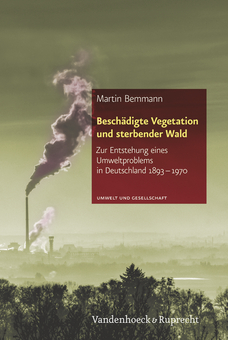 Volume 5: Martin Bemmann, Beschädigte Vegetation und sterbender Wald: Zur Entstehung eines Umweltproblems in Deutschland 1893–1970
Volume 5: Martin Bemmann, Beschädigte Vegetation und sterbender Wald: Zur Entstehung eines Umweltproblems in Deutschland 1893–1970
Martin Bemmann focuses on the debate in Germany about forest damage due to air pollution to shed light on the greater picture of how the approach towards environmental problems has changed over time. The primarily economic concerns of the late nineteenth century had become a socially relevant environmental problem by the 1970s, a problem that would become familiar worldwide as Waldsterben, "forest dieback." The book selects five key moments in this ongoing discussion and shows how the shift in the public discourse and policy was embedded in socio-economic, political and ideological developments in German society.
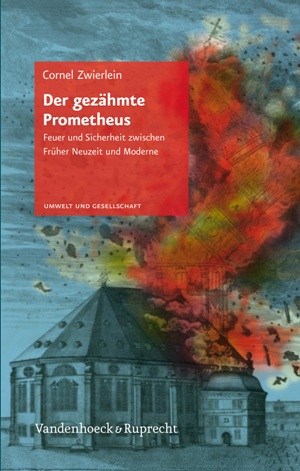 Volume 3: Cornel Zwierlein, Der gezähmte Prometheus: Feuer und Sicherheit zwischen Früher Neuzeit und Moderne
Volume 3: Cornel Zwierlein, Der gezähmte Prometheus: Feuer und Sicherheit zwischen Früher Neuzeit und Moderne
In the pre-modern era, city-wide fires posed one of the greatest imaginable catastrophes: they turned cities into ashes and destroyed homes and possessions, and at the same time marked the limits of human control over nature. Starting in the seventeenth century, fire insurance was a precursor to contemporary insurance giants and one of the earliest forms of institutionalized disaster surveillance. Cornel Zwierlein traces the extent, character and perception of conflagrations and the development of insurance from its beginings in Germany and England in the fifteenth century through the globalization of the nineteenth century and the new metropoles in Turkey, India and the USA.
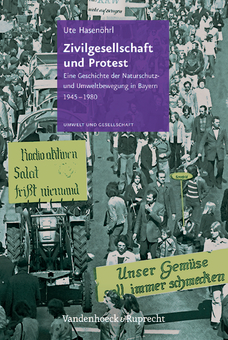 Volume 2: Ute Hasenöhrl, Zivilgesellschaft und Protest: Eine Geschichte der Naturschutz- und Umweltbewegung in Bayern
Volume 2: Ute Hasenöhrl, Zivilgesellschaft und Protest: Eine Geschichte der Naturschutz- und Umweltbewegung in Bayern
1945–1980 Nature conservation in Bavaria underwent a fundamental change between the end of World War II and the late 1970s. Ute Hasenöhrl looks at key areas of conflict such as nuclear energy and tourism, and shows how nature conservation developed from a mainly conservative movement to a concernshared by the postmaterialist left. In addition to these changes, continuities also become clear, however: "Granddaddy's nature conservation" wasn't nearly as old-fashioned and passive as popular conceptions of the post-war period frequently portray it.
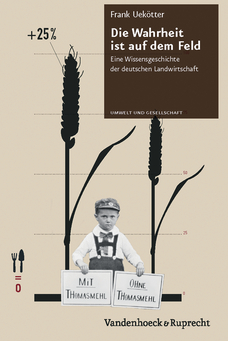 Volume 1: Frank Uekoetter, Die Wahrheit ist auf dem Feld: Eine Wissensgeschichte der deutschen Landwirtschaft
Volume 1: Frank Uekoetter, Die Wahrheit ist auf dem Feld: Eine Wissensgeschichte der deutschen Landwirtschaft
There are few areas of German society that have been more profoundly affected by innovations in science and technology than agriculture: A pre-modern agrarian society in which hunger was a constant threat has been transfor
med by industrial production methods which produce an abundance of food but also lead to serious environmental problems. Frank Uekötter examines the developments in agricultural practices since the nineteenth century as well as the debates and conflicts to which they have given rise.


